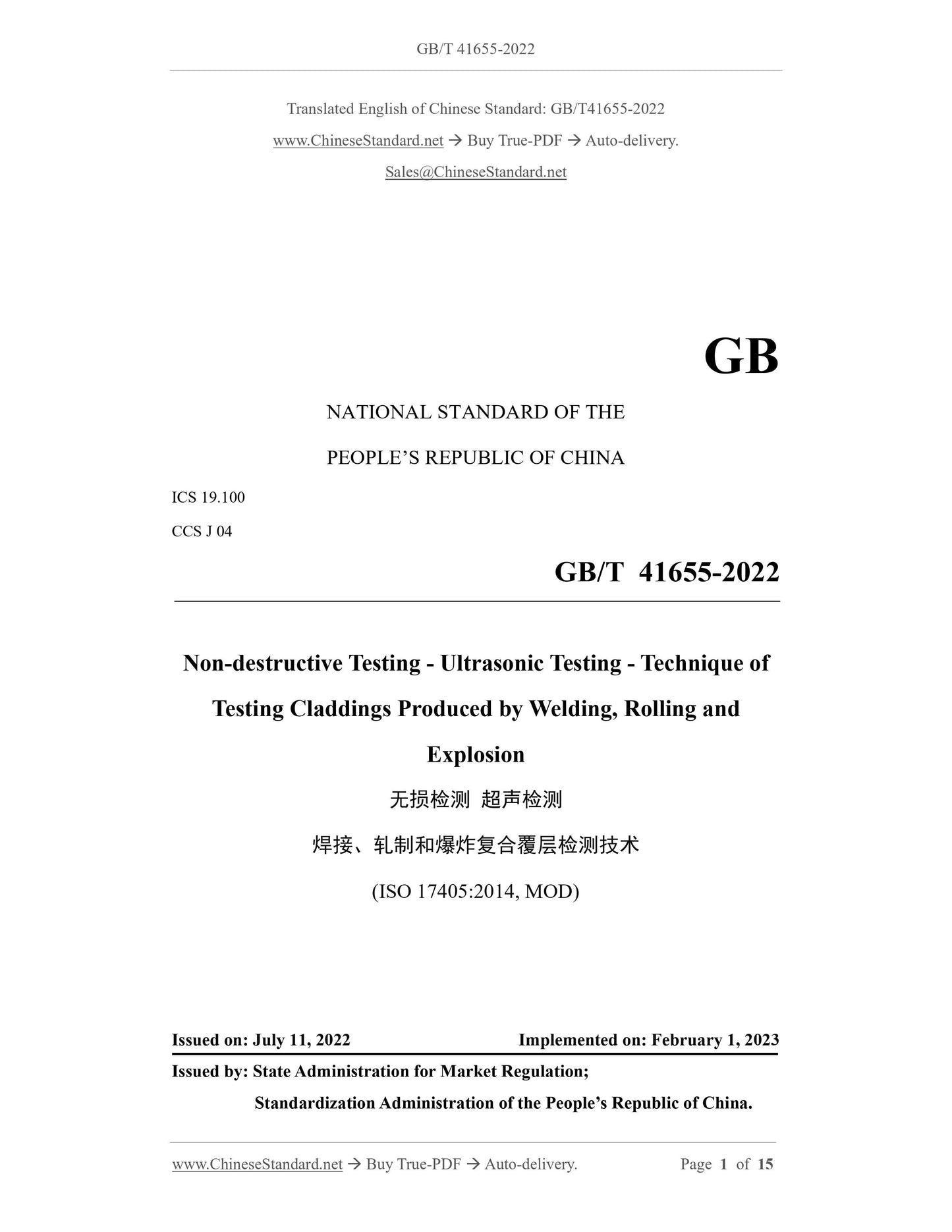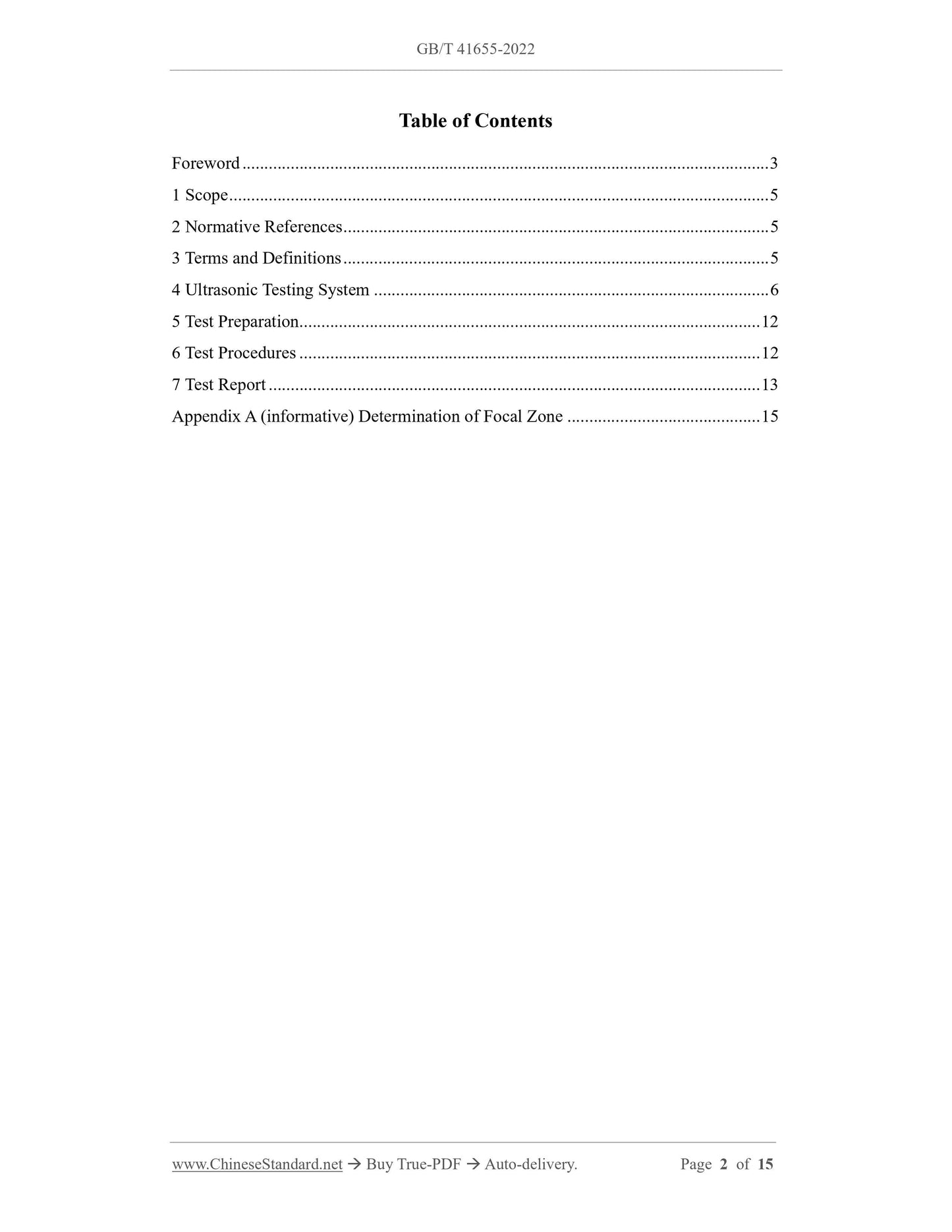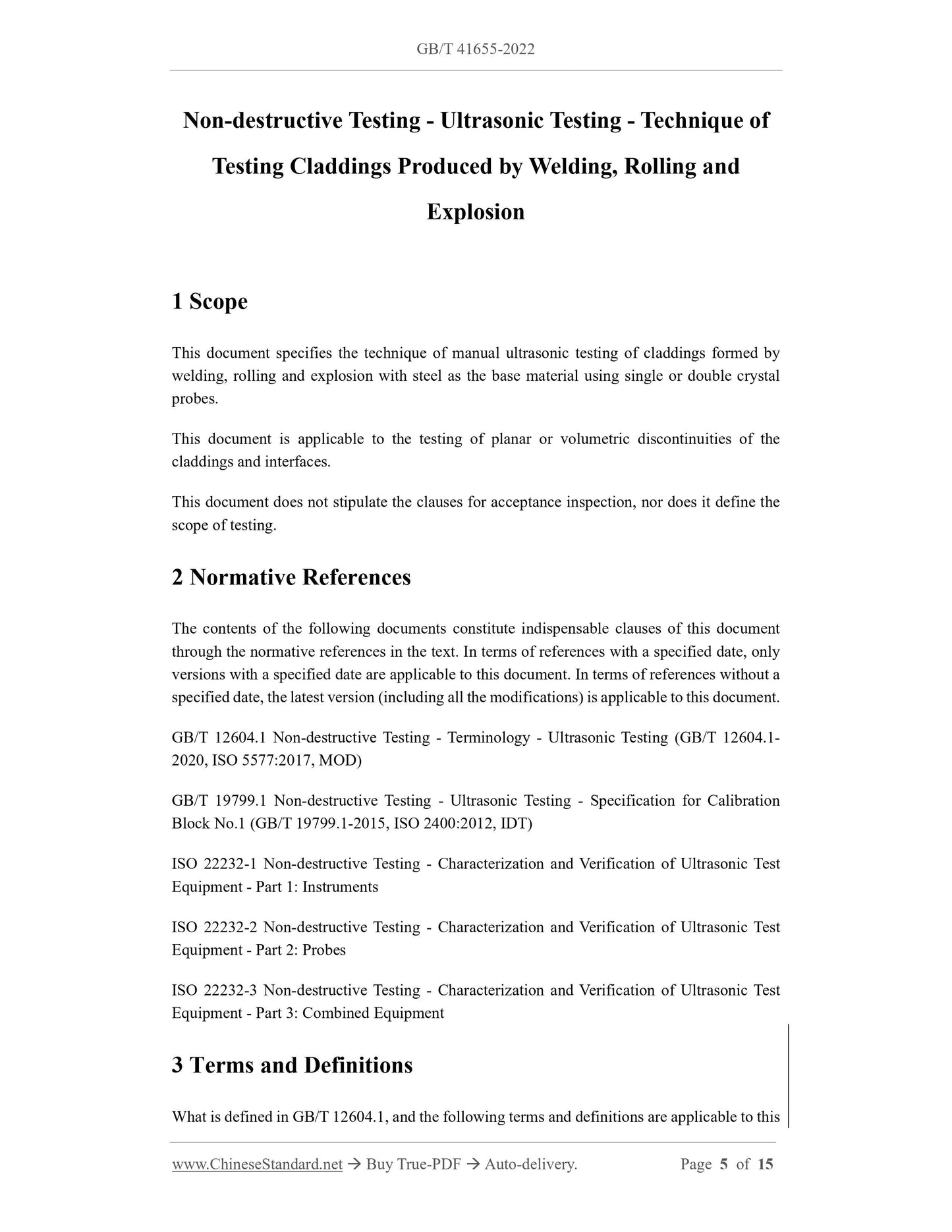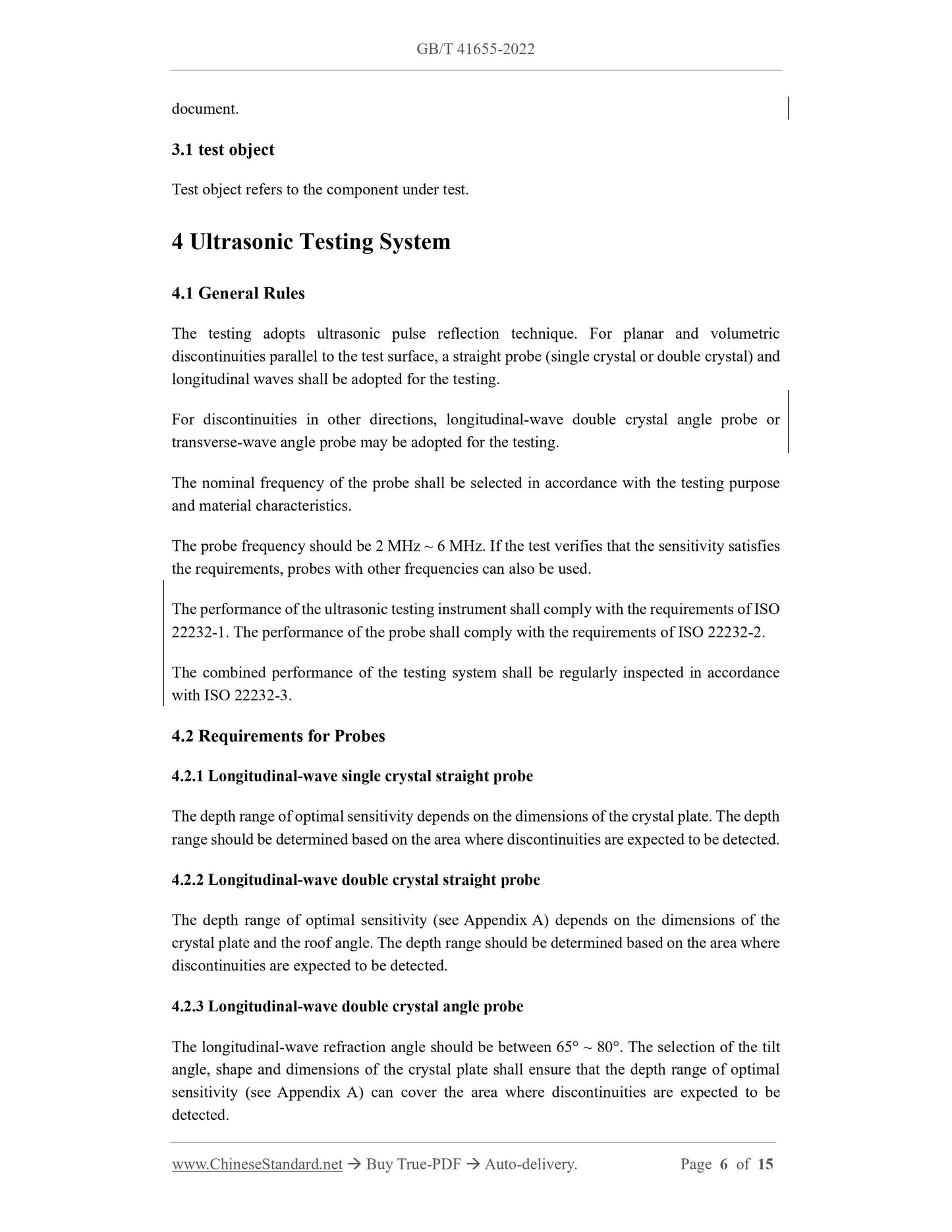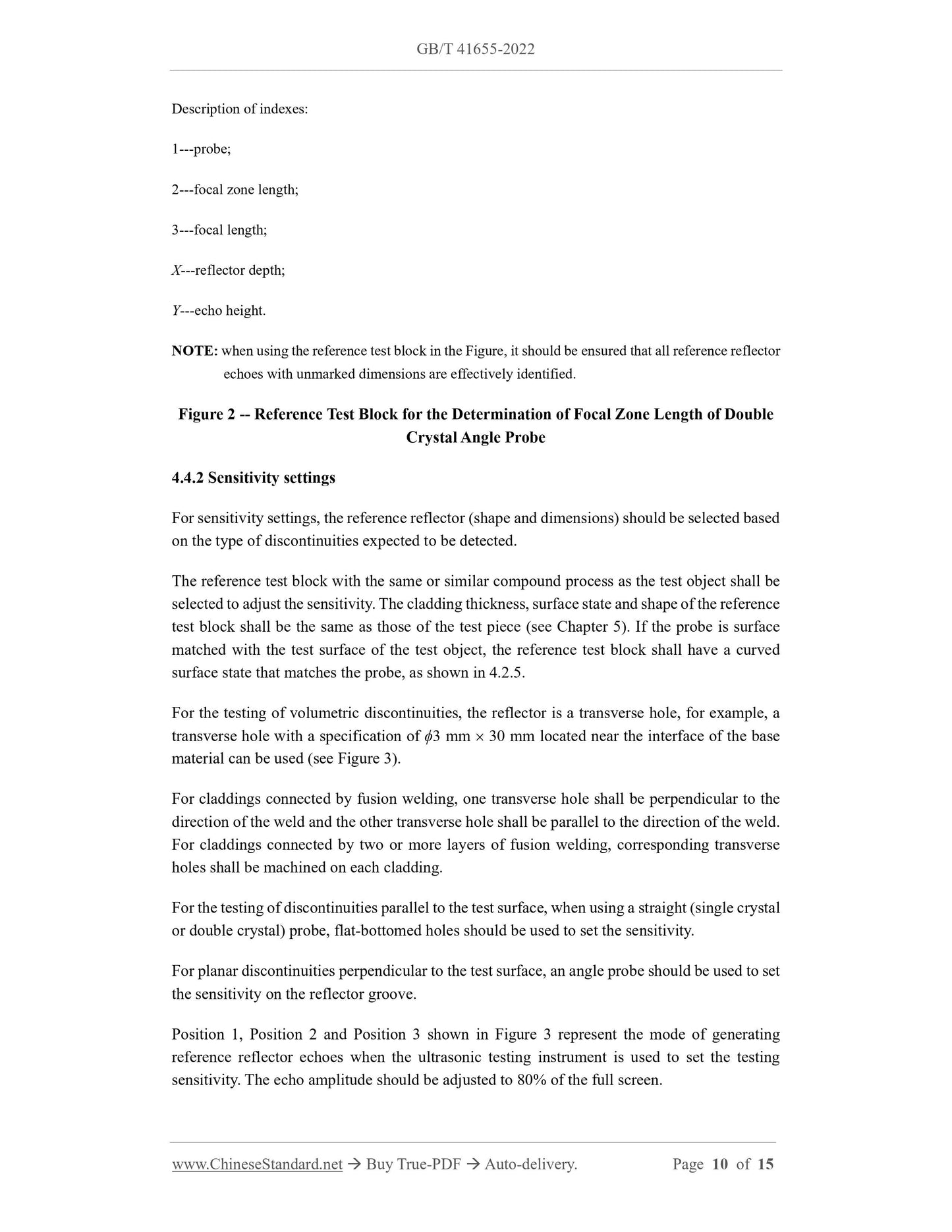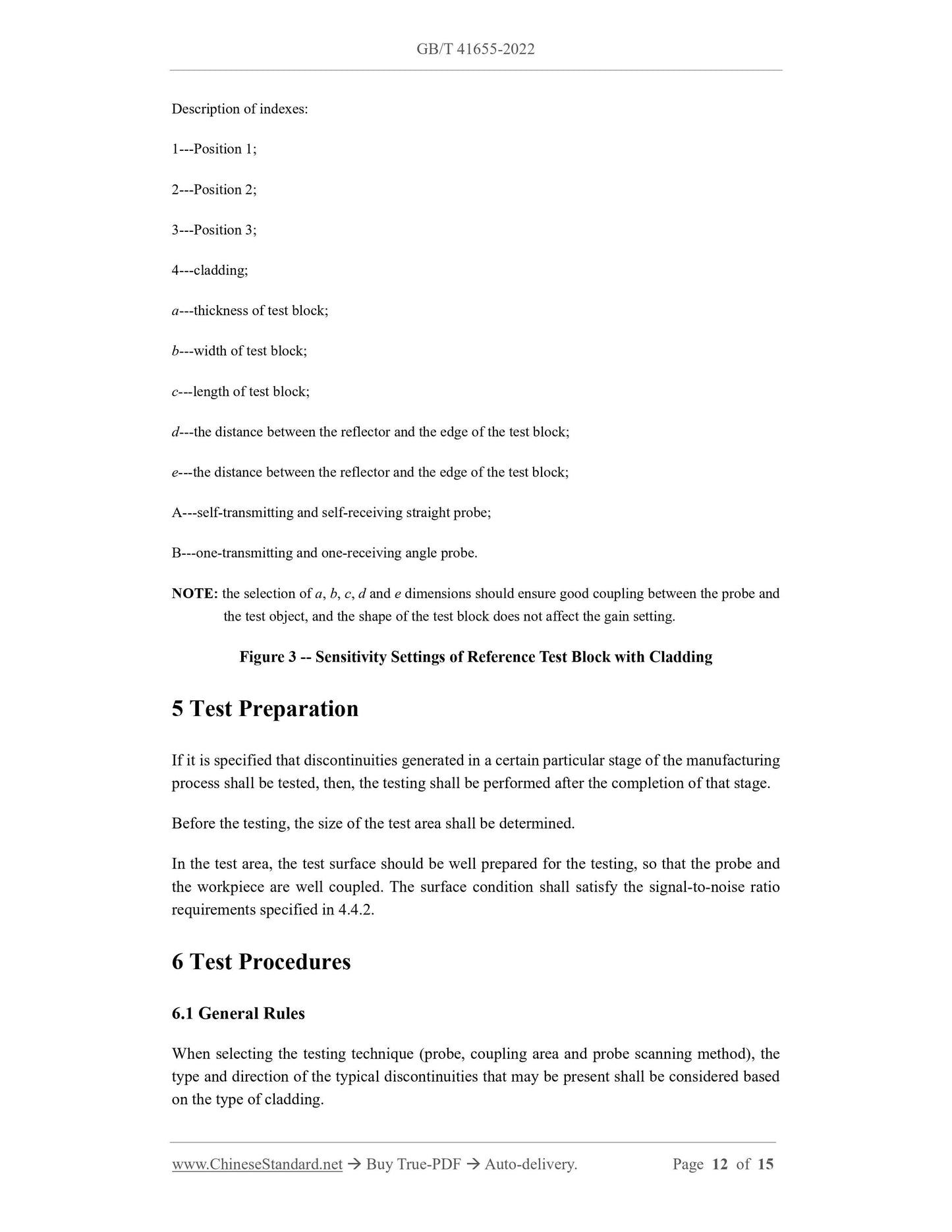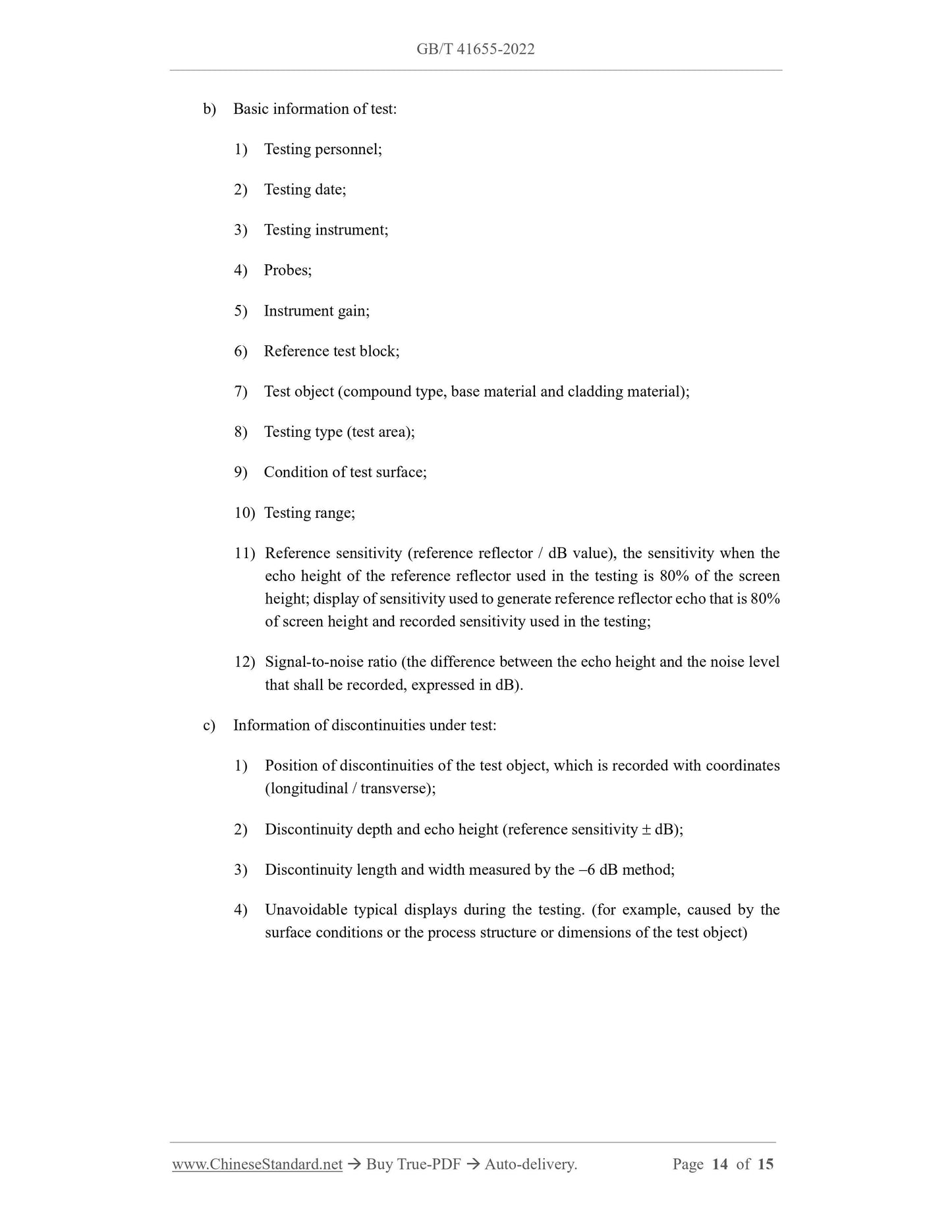1
/
of
7
www.ChineseStandard.us -- Field Test Asia Pte. Ltd.
GB/T 41655-2022 English PDF (GB/T41655-2022)
GB/T 41655-2022 English PDF (GB/T41655-2022)
Regular price
$245.00
Regular price
Sale price
$245.00
Unit price
/
per
Shipping calculated at checkout.
Couldn't load pickup availability
GB/T 41655-2022: Non-destructive testing - Ultrasonic testing - Technique of testing claddings produced by welding, rolling and explosion
Delivery: 9 seconds. Download (and Email) true-PDF + Invoice.Get Quotation: Click GB/T 41655-2022 (Self-service in 1-minute)
Newer / historical versions: GB/T 41655-2022
Preview True-PDF
Scope
This document specifies the technique of manual ultrasonic testing of claddings formed bywelding, rolling and explosion with steel as the base material using single or double crystal
probes.
This document is applicable to the testing of planar or volumetric discontinuities of the
claddings and interfaces.
This document does not stipulate the clauses for acceptance inspection, nor does it define the
scope of testing.
Basic Data
| Standard ID | GB/T 41655-2022 (GB/T41655-2022) |
| Description (Translated English) | Non-destructive testing - Ultrasonic testing - Technique of testing claddings produced by welding, rolling and explosion |
| Sector / Industry | National Standard (Recommended) |
| Classification of Chinese Standard | J04 |
| Word Count Estimation | 13,189 |
| Issuing agency(ies) | State Administration for Market Regulation, China National Standardization Administration |
Share
